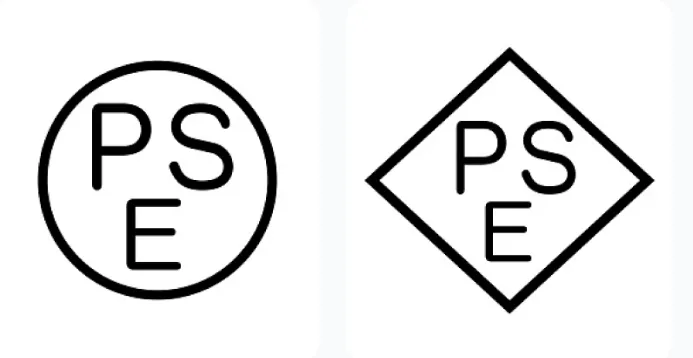
What is Electromagnetic Interference EMI Testing?
What is emc testing?
Electromagnetic Compatibility (EMC) refers to the ability of electronic devices to exist in an electromagnetic environment without causing interference to other electronic devices in that environment. EMC has two main aspects: First, the device shoULd operate normally in a certain electromagnetic environment, meaning it should have a certain level of electromagnetic immunity (EMS); secondly, the electromagnetic interference (EMI) generated by the device itself should not affect other electronic products excessively. The purpose of EMC testing is to check the impact of electromagnetic radiation from electrical products on humans, public power grids, and other normally operating electrical devices.
What does EMI mean?
Electromagnetic Interference (EMI) refers to the effect when an electrical or electronic device operates and causes interference to another device due to the electromagnetic fields it generates during operation.
Electromagnetic Compatibility is a discipline that studies how various electrical devices (including biological systems) can coexist in limited space, time, and spectrum conditions without causing degradation. It involves both electromagnetic interference and electromagnetic susceptibility. emi testing measures the intensity of electromagnetic waves emitted by a device in normal operation to reflect the degree of interference with surrounding electronic devices. Electromagnetic susceptibility testing measures the device's ability to resist electromagnetic interference.
Which products need emi testing?
Information technology products, lighting products, home appliances, audio and video products, automotive electronics, communication products, electronic toys, wireless products.
What are the standards for EMI testing?
International Standards:
1. CISPR (International Special Committee on Radio Interference)
- CISPR 11: Electromagnetic interference standards for industrial, scientific, and medical equipment.
- CISPR 22: Electromagnetic interference standards for information technology devices (now replaced by CISPR 32).
- CISPR 32: EMC requirements for multimedia devices.
2. IEC (International Electrotechnical Commission)
- IEC 61000: EMC standards covering immunity and EMI testing.
- IEC 61000-4-3: Radiated immunity testing.
- IEC 61000-4-6: Immunity to conducted disturbances.
3. ISO (International Organization for Standardization)
- ISO 7637: Electromagnetic interference standards for motor vehicles.
Chinese Standards:
1. GB/T 17626: EMC-related standards.
- GB/T 17626.1: Radiated immunity testing.
- GB/T 17626.2: Immunity to electrical fast transients/burst.
2. GB 9254: EMI standards for information technology devices.
3. GB/T 13837: EMC testing standards for electrical power equipment.
US Standards:
1. FCC (Federal Communications Commission)
- fcc part 15: EMI requirements for wireless communication devices, mainly focusing on radiation from broadcast and communication equipment.
2. MIL-STD-461: The US Department of Defense EMC standards for military equipment.
European Standards:
1. EN 55011: Electromagnetic interference standards for industrial, scientific, and medical equipment (aligned with CISPR 11).
2. en 55032: EMC requirements for multimedia devices (aligned with CISPR 32).
3. IEC 61000-4-2: Electrostatic discharge immunity testing.
EMI Testing Items
Electromagnetic interference includes both radiated emissions and conducted emissions.
- Radiated Emissions: Electromagnetic interference that propagates through space in the form of electromagnetic waves.
- Conducted Emissions: Electromagnetic interference that propagates along conductors.
EMC Testing Items:
- Conduction Emission (9 kHz - 30 MHz)
- Power Radiation (30 MHz - 300 MHz)
- Magnetic Emission (9 kHz - 30 MHz)
- Radiated Emission (30 MHz - 18 GHz)
- Intermittent Conducted Interference (Click)
- Harmonics (Class A, B, C, D)
- Voltage Flicker (PLT, PST)
- Electrostatic Discharge (ESD) (±0.1 - ±16.5 kV)
- Radiated Immunity (below 1 GHz)
- Fast Transient/EFT (±0.1 - ±4.4 kV)
- Surge (0.1 - 6.6 kV)
- Conducted Immunity (CS) (0.1 - 30 V)
- Magnetic Field Immunity (MS) (0 - 120 A/m)
- Voltage Dips (0% - 100%)
- Oscillatory Wave Surge (0.1 - 6.6 kV, 100 kHz waveform)
- Harmonic and Interharmonic Immunity
- Magnetic Field EFM (10 Hz - 400 kHz, EN50366)
JJR Lab in China holds international certifications and testing qualifications and provides EMC testing services for electronic products and wireless Bluetooth devices. Since we are located in China, we can help you save 30% on testing costs. Feel free to contact us for inquiries!
Email:hello@jjrlab.com
Write your message here and send it to us
 What is Amazon TIC and How Can Sellers Achieve Com
What is Amazon TIC and How Can Sellers Achieve Com
 2026 Battery UN38.3 Certification (Test Report) &a
2026 Battery UN38.3 Certification (Test Report) &a
 What is the IEC 62680 Standard? Compliance Interpr
What is the IEC 62680 Standard? Compliance Interpr
 Amazon Japan December Compliance Requirements
Amazon Japan December Compliance Requirements
 How to Check a CPSC-Accepted Laboratory?
How to Check a CPSC-Accepted Laboratory?
 WEEE Registration for Waste Electrical &Electr
WEEE Registration for Waste Electrical &Electr
 MSDS Chemical Safety Testing
MSDS Chemical Safety Testing
 What Are the Differences Between UK REACH and EU R
What Are the Differences Between UK REACH and EU R
Leave us a message
24-hour online customer service at any time to respond, so that you worry!




